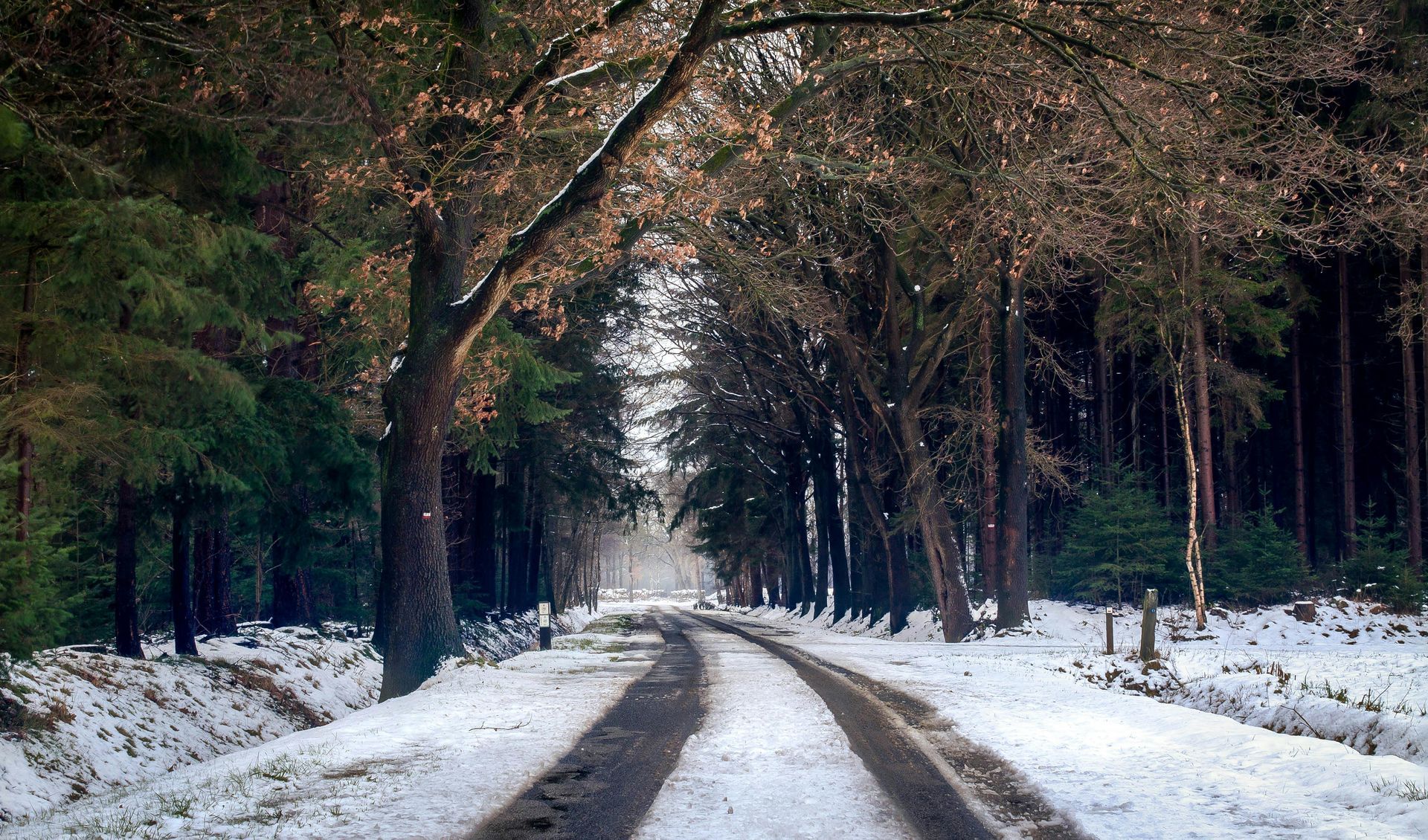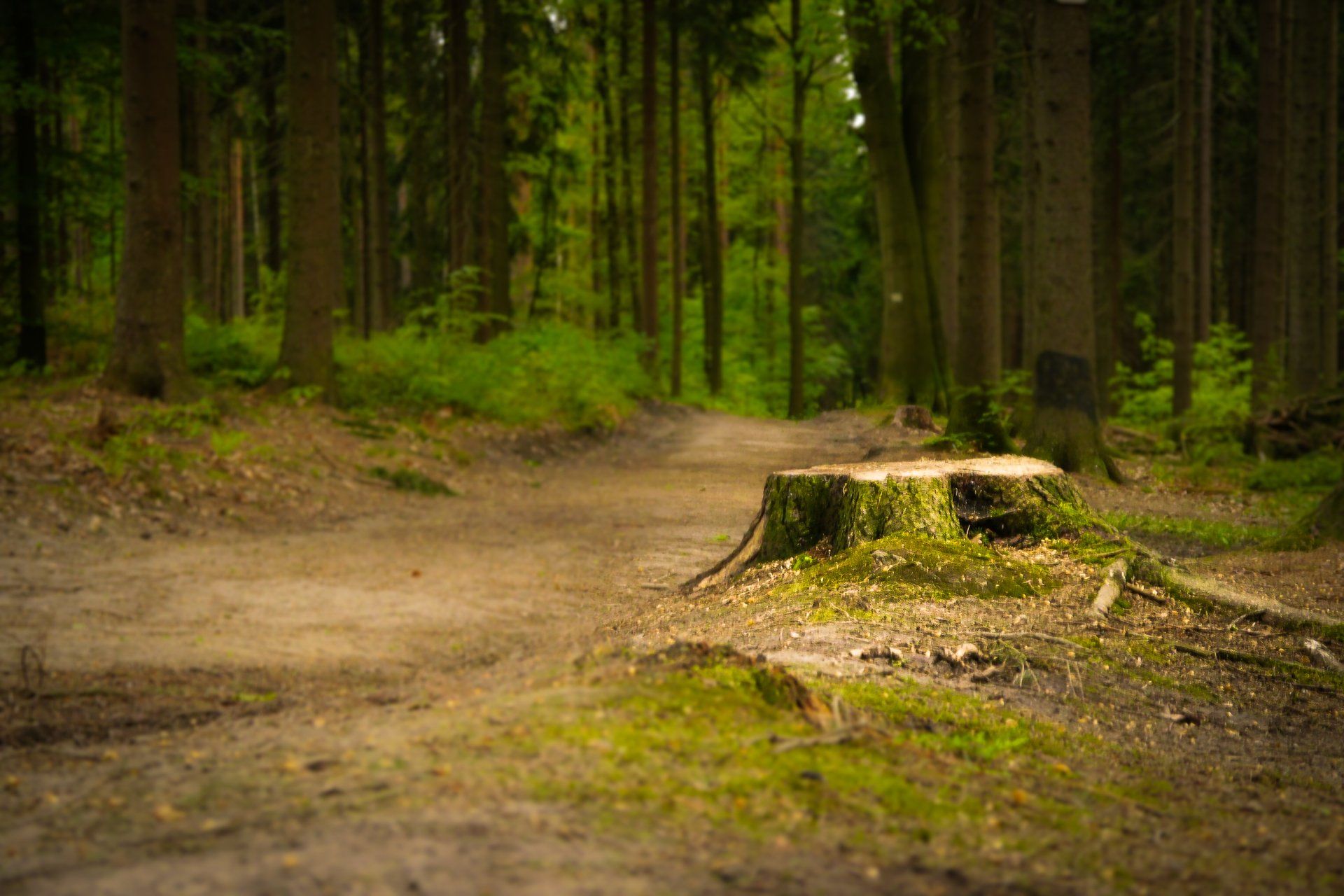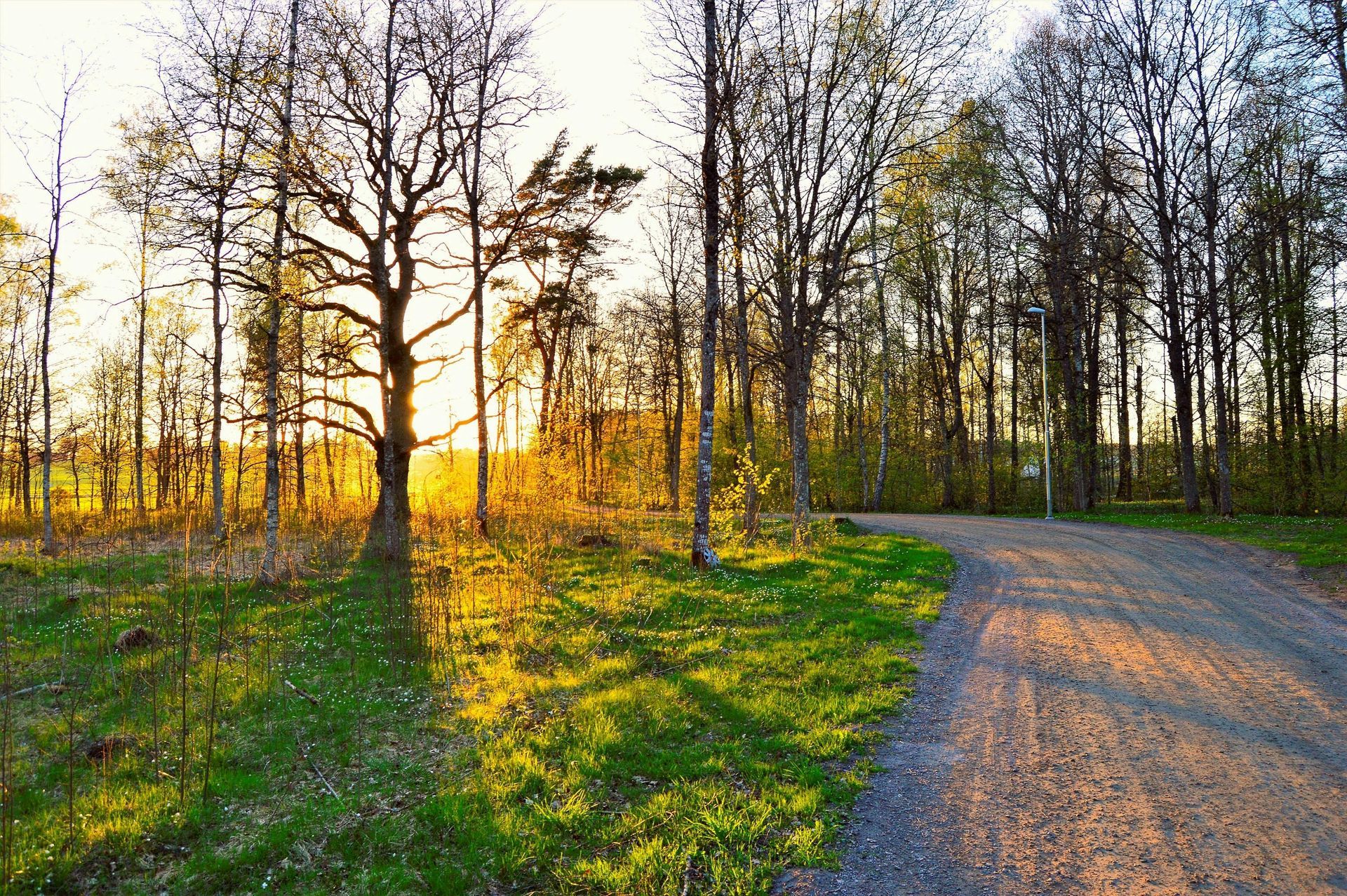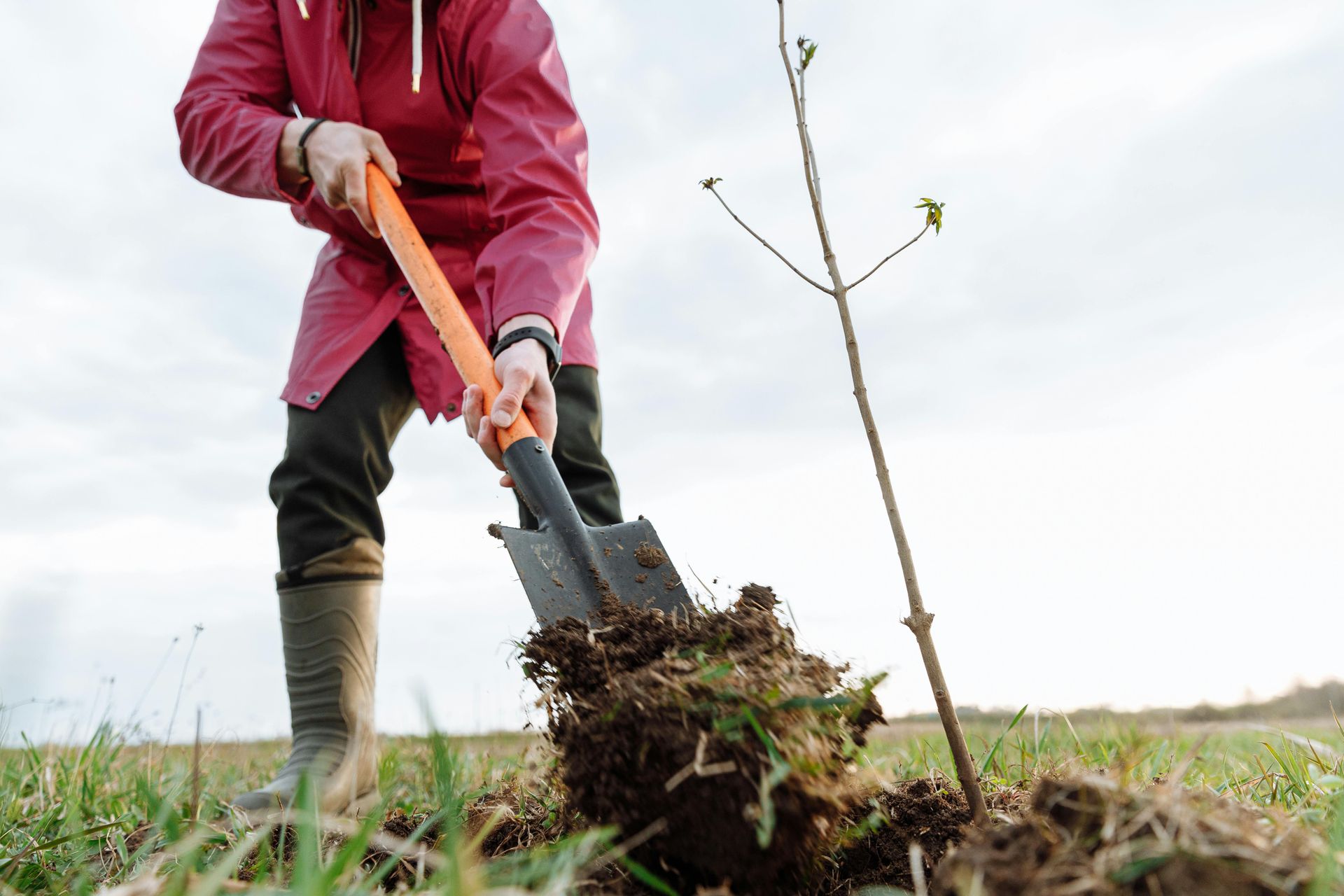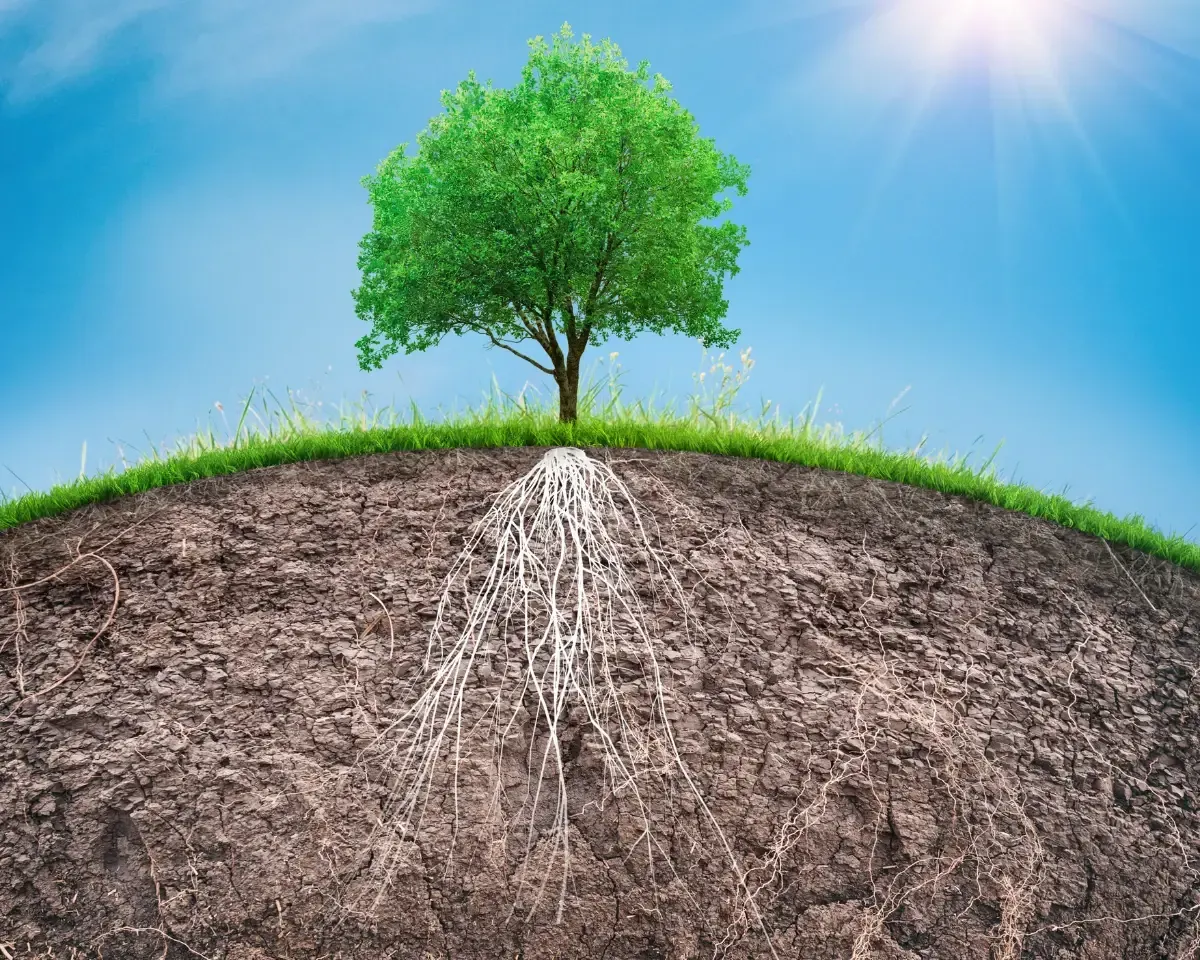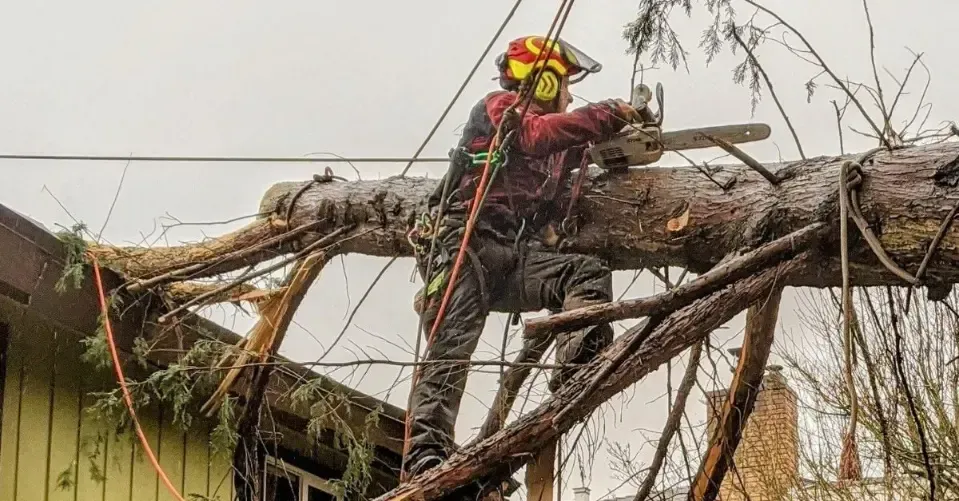13 Ways To Winterize Your Seattle Landscaping - Sound Tree Care
13 Ways To Protect Your Trees And Landscaping During Winter In Seattle

As the mercury drops and cooler temperatures settle in, we prepare for life indoors. We bring out the warmer clothing and blankets, switch off the a/c, and turn up the heat.
But what about our yard? Do we need to prepare our outdoor plants for winter too?
The answer is yes. Winterizing your gardens, shrubs, and trees during late October/early November helps them withstand the thaw and freeze cycles and gives them a leg up when spring arrives.
Here are ways you can do before the first freeze to protect your outdoor plants and landscaping from the bite of the Seattle winter.
13 Things To Do to Prepare Your Yard For Winter In Seattle
1. Rake Up Leaves
Rake up fallen leaves before they get soaked by the rain, if possible. Leave the leaves around the base of your trees and in your garden and flower beds so long as they are not harboring pests or disease. Leaves provide a nutrient-rich mulch.
Shredded leaves provide a nutrient-rich soil cover, so don’t bag it up just yet. Apply a layer of crumpled leaves around your shrubs, flowers, and plants, and add the excess to your compost or bag it up.
2. Bring tropical or delicate potted plants indoors.
Winter potted plants indoors. If you cannot bring them all into your home, storing them in your garage or shed protects them from wind and frost. If delicate plants are in the ground, a cardboard box can offer enough protection from the wind and freezing.
Cover the outdoor potted plant with cardboard or a wood shelter if it is too large or heavy to move. Covering it from the ground up helps shield it from the harsh effects of old man winter.
Pro Tip: If your plants are cold, warm them up gradually to avoid shocking them.
3. Weed Gardens And Flower Beds
Fall is a great time to remove those weeds and invasive plants from your garden and yard. Dig them out, bag them, and dispose of them permanently to keep them from growing back in the spring.
Harvest any vegetables left in your garden. Kale, broccoli, cress, and other vegetables thrive in cooler temperatures and will continue to grow so long as they’re protected from frost.
It’s also a great time to
thin dominant perennials
and plant crocus, tulips, daffodils, and other early spring blooms. Plant those bulbs now for a burst of color in the spring!
4 Prune Shrubs And Trees
Roses, other shrubs, and deciduous trees must be pruned and prepared for the dormant period to ensure vigorous growth in the spring.
If you are unsure how to correctly prune your plants, have a
professional pruning service take care of them. Incorrect or overzealous pruning can do more harm than good.
For helpful tips on how to correctly prune your trees, we put together a
handy guide.
5. Spray Anti-Desiccant Onto Shrub Leaves
Apply anti-desiccant to the top and bottom of your shrub’s leaves to prevent them from drying and suffering from winter burn.
Start applying anti-desiccant in November and re-apply monthly throughout the winter when temperatures are above 40 degrees.
6. Cover Delicate Shrubs, Trees, And Plants
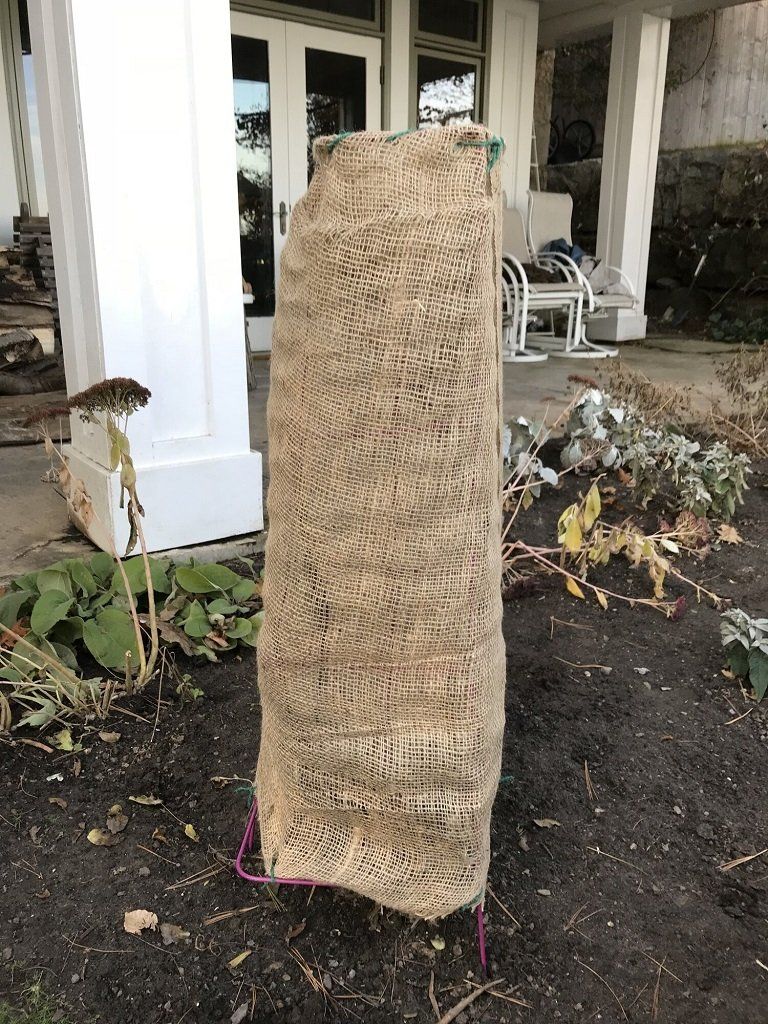
Follow the weather forecast and watch for frost and freezing temperatures. We don’t experience freezing temperatures here in the Pacific Northwest for long periods, but they do happen. Cover your gardens with old bed sheets, landscape fabric, newspaper, or cardboard to protect them from frost.
Read
Practical Tips For Covering Plants In Winter: Do I Need To? for more information about covering your plants.
Fruit trees, woody shrubs, and young trees also benefit from protection during cold snaps.
Use natural materials
such as burlap, sheets, or landscaping fabric to cover your plants loosely. Apply wraps over stakes or a cage frame, so it doesn’t touch the leaves, and remove it as soon as the weather improves.
Cover new plants for the
first 2 years while they get established. Trees and shrubs become more resilient over time.
When wrapping,
ensure space between the fabric and your plants to prevent winter burn. If possible, use a frame to keep the covering away. Remove snow regularly.
Remember: uncover them once the threat of frost and high winds has passed, so they get enough sunlight and don’t overheat.
7. Create A Wind Barrier For Shrubs And Hedges
To create a wind barrier, hammer stakes into the ground around your shrubs and hedges, wrap burlap around them and staple them to the stakes.
Pro Tip: To protect perimeter plants from the harmful effects of road salt, install a burlap barrier wall.
8. Tie Up Shrubs To Protect Them From Snow
To prevent snow from weighing down your shrub and causing breakage, tie their branches up in Jute twine. Untie your shrubs in early spring.
For trees and shrubs that are too tall or large to bind, gently
shake off the branches after each snowfall with a soft bristle broom.
9. Water Trees And Shrubs
Moist soil provides better insulation than dry and doesn’t freeze as readily. Woody trees and plants must keep functioning all winter to withstand the cold, and we can’t always count on getting enough rain.
Monthly watering keeps the soil moist and your trees hydrated all winter long.
Pro Tip:
Reduce the water flow to a dribble and leave your hose between roots at the base of your tree, moving locations every few hours.
10. Harvest Your Compost
After the hot summer, your compost should be sufficiently decomposed and full of nutrients your plants will love.
Spread that luscious decayed plant matter over your garden soil and around your pants. It will continue to decompose underneath your mulch, replenishing the soil and feeding your plants all winter long, so they are ready to spring into the next growing season.
With all that good stuff nourishing your garden, there should be plenty of space in your compost for the fall leaves, pruning debris, grass clippings, and holiday scraps. So go ahead and add them to the compost pile. You’ll have another batch of nutrient-rich organic matter to give your garden a boost in the spring.
11. Mulch Your Plants And Trees
The best defense against the drying and freezing effects of winter in Seattle is to
mulch your gardens, shrubs, and trees. Organic mulch such as sawdust, shredded leaves, bark, and wood chips provide excellent insulation for your plants. Mulching shields the soil from the drying winds, and the heaving effects of freezing and thawing, prevent soil erosion and compaction while providing additional nutrients.
Mulch also keeps the soil cold during warm spells, which is a good thing.
Why is cold soil better than warm in the winter?
Keeping the soil cold when the temperatures are unseasonably warm ensures that your plants don’t start growing prematurely while ensuring your plants don’t have to endure stressful freezing and thawing cycles.
Apply a
2 to 3-inch layer
of organic mulch to flower beds, gardens, and around the base of shrubs and trees,
careful not to cover the above-ground root zone.
12. Shelter Shrubs From Falling Icicles
Shrubs and trees close to your home can be damaged by icicles and snow falling from your roof and gutters.
Constructing a sloped shield above shrubs and trees beneath your home protects them from icicles and heavy snow that falls from your roof and gutters.
13. Clean And Sharpen Your Tools
With the winterizing done, fall is an excellent time to clean and sharpen your gardening and
pruning tools.
Wash off all the dirt and debris and dry them thoroughly. Remove any rust with a wire brush or sandpaper.
Sharpen shovels and hoes using a basic mill file. A whetstone works well for sharpening bladed tools. Rub the edges with a rag soaked with machine oil to seal the metal from oxidation.
Should I leave annuals and debris in my garden over the winter?
There are two schools of thought when it comes to leaving plant debris in the garden over the winter. On the one hand, some experts recommend removing annual flowers and vegetables because plant debris provides a cozy home for overwintering pests and bacteria that will wreak havoc on new growth in the spring. It also looks messy and unattractive.
Other gardening enthusiasts recommend leaving the dead plants and flowers where they lay - as long as they aren’t diseased or infested - because they provide essential nutrients.
So long as the debris isn’t diseased, leaving it in the garden offers more benefits than risks. Once you cover the detriment with a thick layer of organic mulch, your garden will look cared for, so the aesthetics won’t be a concern.
Can I use plastic to cover my plants in the winter?
No. Plastic doesn’t breathe. It traps moisture which can cause your plants to rot. Heat cannot escape when temperatures rise, causing your plants to overheat. It also acts as a cold conduit freezing any leaves it touches.
Use breathable, natural materials like cotton sheets, blankets, burlap, or landscape fabric to cover your garden beds, shrubs, and trees.
Conclusion
Taking these steps to winterize your gardens and landscaping in the fall ensures your plants will survive the Seattle winter and are primed for the next growing season.
However, not every gardening enthusiast wants to spend a chilly fall weekend winterizing their Seattle landscaping. A local
professional landscaping or tree service has the knowledge and equipment to prepare your plants for winter. A professional can take care of the weeding, pruning, covering, and wrapping of your plants. They know the unique needs of the various plants and trees that grow in Seattle and can address any concerns you have.
For more garden winterizing tips, check out
10 Ways To Prepare Your Garden For Winter.
Sound Tree Care LLC
is a tree care company serving Seatac and the greater Seattle, Washington, area with superior tree pruning, tree rehabilitation, support systems, and more. With a certified arborist on our team, we can address any concerns about your tree and provide you with the fall tree care services you need.
